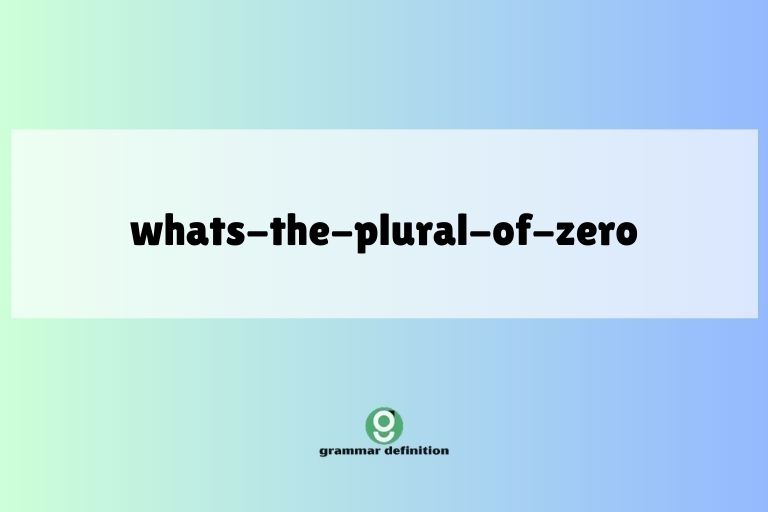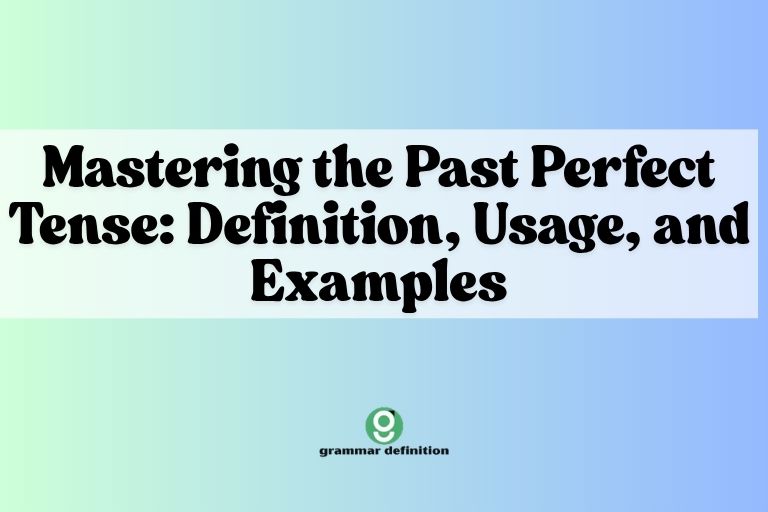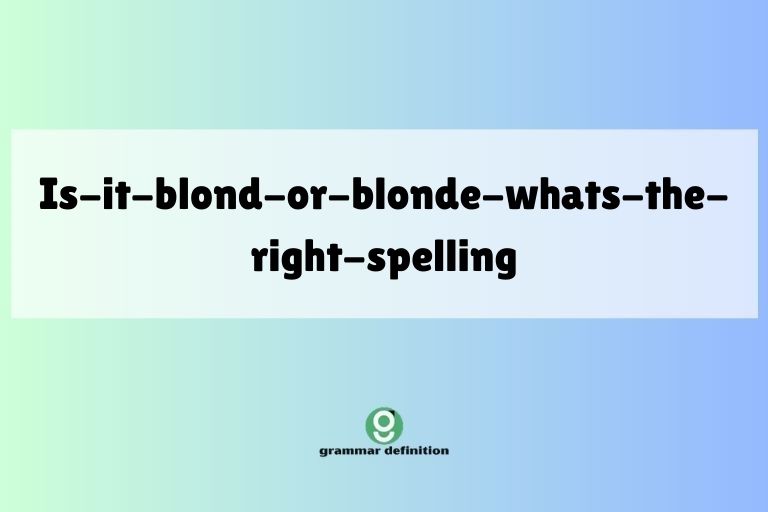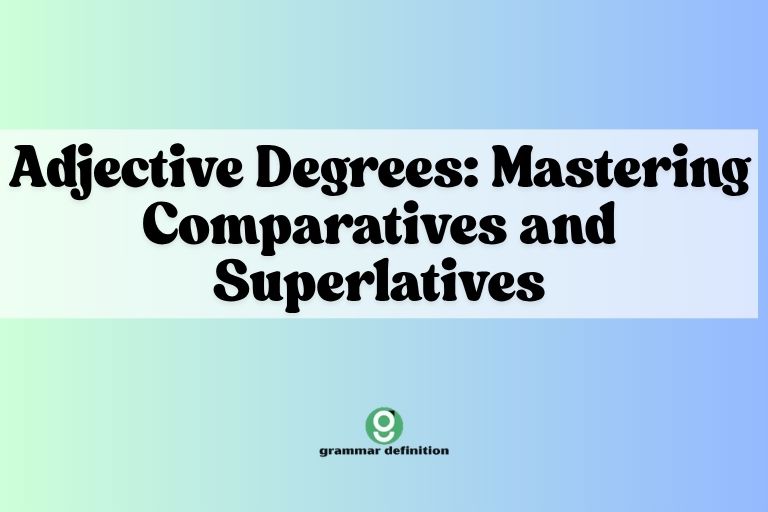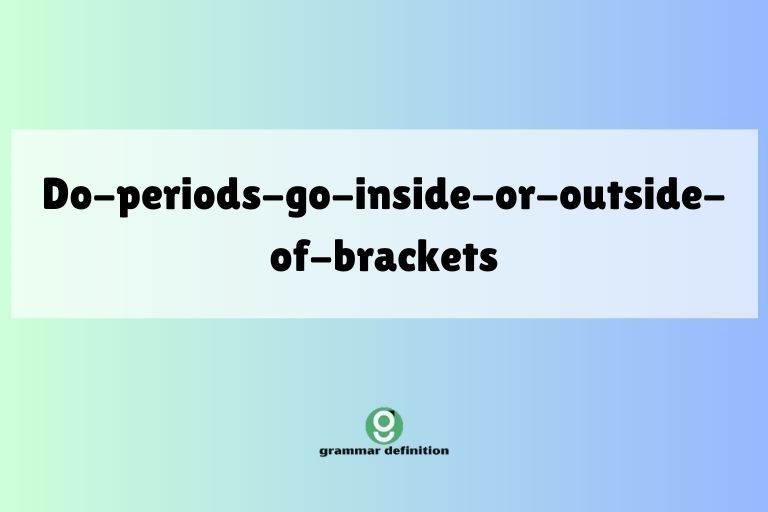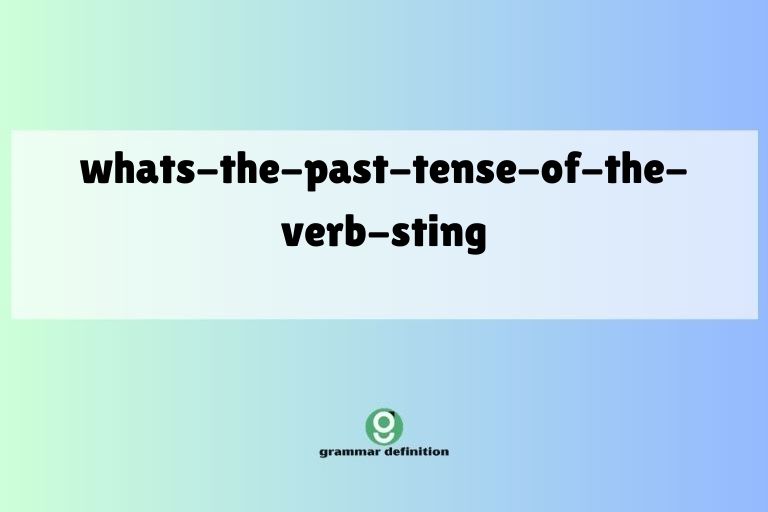Coordinate Clauses: Definition, Usage, and Examples
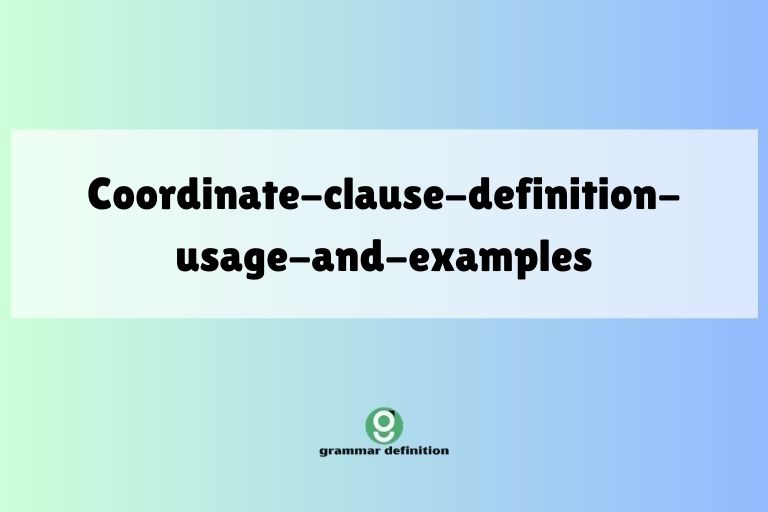
Understanding coordinate clauses is crucial for mastering English grammar. These clauses allow you to create more complex and interesting sentences by linking related ideas together.
This article provides a comprehensive guide to coordinate clauses, covering their definition, structure, types, usage rules, common mistakes, and advanced topics. Whether you’re a student, a teacher, or simply an English enthusiast, this guide will help you improve your understanding and use of coordinate clauses in your writing and speaking.
This article is designed for English language learners of all levels, from beginners looking to grasp the basics to advanced speakers aiming to refine their skills. By the end of this article, you’ll be able to identify, construct, and effectively use coordinate clauses to express your thoughts with greater clarity and precision.
Table of Contents
- Definition of Coordinate Clauses
- Structural Breakdown
- Coordinating Conjunctions
- Types of Coordinate Clauses
- Examples of Coordinate Clauses
- Usage Rules
- Common Mistakes
- Practice Exercises
- Advanced Topics
- FAQ
- Conclusion
Definition of Coordinate Clauses
A coordinate clause, also known as an independent clause, is a group of words that contains a subject and a verb and expresses a complete thought. It can stand alone as a sentence. The key characteristic of coordinate clauses is that they are linked together by coordinating conjunctions to form compound sentences. These conjunctions indicate the relationship between the clauses, such as addition, contrast, cause and effect, or choice.
Coordinate clauses are essential for creating more complex and nuanced sentences. They allow you to combine related ideas into a single, coherent statement, making your writing more efficient and engaging.
Understanding how to use coordinate clauses correctly is a fundamental skill for effective communication in English.
In essence, a coordinate clause is an independent unit of thought that shares equal grammatical rank with another independent unit, and they are joined using a coordinating conjunction. This is different from subordinate clauses, which depend on the main clause for their meaning.
Structural Breakdown
The basic structure of a compound sentence containing coordinate clauses is as follows:
Independent Clause + Coordinating Conjunction + Independent Clause
Each independent clause must contain a subject and a verb and express a complete thought. The coordinating conjunction acts as a bridge, connecting the two clauses and indicating their relationship.
Punctuation, typically a comma, is used before the coordinating conjunction.
Let’s break down each component:
- Independent Clause 1: Subject + Verb (+ Optional Modifiers)
- Coordinating Conjunction: connects the two clauses
- Independent Clause 2: Subject + Verb (+ Optional Modifiers)
For example:
I went to the store, and I bought some milk.
- I went to the store (Independent Clause 1)
- and (Coordinating Conjunction)
- I bought some milk (Independent Clause 2)
The order of the clauses can sometimes be reversed, depending on the intended emphasis. However, the basic structure remains the same: two independent clauses joined by a coordinating conjunction.
Coordinating Conjunctions
Coordinating conjunctions are the glue that holds coordinate clauses together. There are seven coordinating conjunctions in English, often remembered by the acronym FANBOYS:
- For
- And
- Nor
- But
- Or
- Yet
- So
Each of these conjunctions has a specific meaning and indicates a particular relationship between the clauses it connects. Understanding these nuances is crucial for using coordinate clauses effectively.
Here’s a brief explanation of each:
- For: Indicates reason or cause. (e.g., He couldn’t go to the party, for he was sick.)
- And: Indicates addition or continuation. (e.g., She likes to read, and she enjoys writing.)
- Nor: Indicates a negative addition. (e.g., He doesn’t like coffee, nor does he like tea.)
- But: Indicates contrast or opposition. (e.g., I wanted to go to the beach, but it was raining.)
- Or: Indicates a choice or alternative. (e.g., You can have cake, or you can have ice cream.)
- Yet: Indicates contrast, similar to “but,” often with a sense of surprise. (e.g., He studied hard, yet he failed the exam.)
- So: Indicates result or consequence. (e.g., She was tired, so she went to bed early.)
The correct choice of coordinating conjunction is crucial for conveying the intended meaning. Using the wrong conjunction can lead to confusion or misinterpretation.
Types of Coordinate Clauses
While all coordinate clauses share the same basic structure (two independent clauses joined by a coordinating conjunction), they can be categorized based on the relationship between the clauses they connect. Understanding these categories can help you choose the appropriate conjunction and construct more effective sentences.
Additive Coordinate Clauses
These clauses express addition or continuation. The conjunction “and” is most commonly used for this purpose.
Example: She sings beautifully, and she plays the piano well.
Contrastive Coordinate Clauses
These clauses express contrast or opposition. The conjunctions “but” and “yet” are used to indicate this relationship.
Example: He is rich, but he is not happy.
Alternative Coordinate Clauses
These clauses present a choice or alternative. The conjunction “or” is used to show that only one of the clauses is true.
Example: You can stay here, or you can leave.
Causal Coordinate Clauses
These clauses express a cause-and-effect relationship. The conjunctions “for” and “so” are used to indicate the reason or consequence.
Example: He was late, so he missed the bus.
Negative Additive Coordinate Clauses
These clauses add a negative idea to the first clause. The conjunction “nor” is used to show that neither of the clauses is true.
Example: He doesn’t like to swim, nor does he enjoy running.
Examples of Coordinate Clauses
The following tables provide numerous examples of coordinate clauses, categorized by the coordinating conjunction used. These examples illustrate the different ways coordinate clauses can be used to express various relationships between ideas.
Each table contains at least 20 examples to give you a comprehensive understanding of how these conjunctions function in connecting independent clauses.
Examples with “And”
The conjunction “and” connects two independent clauses, indicating an addition or continuation of thought. It is one of the most common coordinating conjunctions.
| # | Example Sentence |
|---|---|
| 1 | The sun was shining, and the birds were singing. |
| 2 | She went to the market, and she bought fresh vegetables. |
| 3 | He studied hard, and he passed the exam. |
| 4 | They went to Italy, and they visited Rome. |
| 5 | I like coffee, and she likes tea. |
| 6 | The movie was long, and it was boring. |
| 7 | She is a doctor, and she is a teacher. |
| 8 | He plays guitar, and he sings songs. |
| 9 | We went to the park, and we had a picnic. |
| 10 | She wrote a book, and it became a bestseller. |
| 11 | The rain stopped, and the sun came out. |
| 12 | He finished his work, and he went home. |
| 13 | They bought a house, and they moved in. |
| 14 | I cooked dinner, and she washed the dishes. |
| 15 | She ran fast, and she won the race. |
| 16 | He read the newspaper, and he drank coffee. |
| 17 | They traveled to Europe, and they saw many sights. |
| 18 | I went to the gym, and I worked out. |
| 19 | She studied math, and she understood the concepts. |
| 20 | He wrote a letter, and he mailed it. |
| 21 | The cat slept, and the dog played. |
| 22 | She baked a cake, and everyone enjoyed it. |
| 23 | He planted a tree, and it grew tall. |
| 24 | They watched a movie, and they ate popcorn. |
| 25 | I listened to music, and I relaxed. |
Examples with “But”
The conjunction “but” connects two independent clauses, indicating a contrast or opposition between the ideas. It is used to show a difference or unexpected element.
| # | Example Sentence |
|---|---|
| 1 | He is rich, but he is not happy. |
| 2 | She wanted to go to the party, but she was too tired. |
| 3 | I like coffee, but I don’t like tea. |
| 4 | The movie was interesting, but it was too long. |
| 5 | He studied hard, but he failed the exam. |
| 6 | She is intelligent, but she is lazy. |
| 7 | I wanted to buy the car, but it was too expensive. |
| 8 | He tried his best, but he didn’t succeed. |
| 9 | She is beautiful, but she is arrogant. |
| 10 | I like to travel, but I don’t like flying. |
| 11 | He is strong, but he is gentle. |
| 12 | She is kind, but she is firm. |
| 13 | I wanted to go to the beach, but it was raining. |
| 14 | He is tall, but he is shy. |
| 15 | She is smart, but she is disorganized. |
| 16 | I like to cook, but I don’t like to clean. |
| 17 | He is funny, but he is serious. |
| 18 | She is talented, but she is insecure. |
| 19 | I wanted to buy the dress, but it was sold out. |
| 20 | He is generous, but he is frugal. |
| 21 | She is optimistic, but she is realistic. |
| 22 | I like summer, but I hate the heat. |
| 23 | He is a good player, but he needs to improve his teamwork. |
| 24 | She is a great singer, but she struggles with stage fright. |
| 25 | I enjoy exercising, but sometimes I lack motivation. |
Examples with “Or”
The conjunction “or” connects two independent clauses, indicating a choice or alternative between the ideas. It is used to present options.
| # | Example Sentence |
|---|---|
| 1 | You can have cake, or you can have ice cream. |
| 2 | You can stay here, or you can leave. |
| 3 | We can go to the movies, or we can stay home. |
| 4 | You can study now, or you can study later. |
| 5 | She can take the bus, or she can walk. |
| 6 | He can eat pizza, or he can eat pasta. |
| 7 | They can go to the mountains, or they can go to the beach. |
| 8 | I can read a book, or I can watch TV. |
| 9 | She can wear a dress, or she can wear pants. |
| 10 | He can drive, or she can drive. |
| 11 | We can eat at home, or we can eat out. |
| 12 | You can call me, or you can text me. |
| 13 | She can buy a new car, or she can buy a used car. |
| 14 | He can work hard, or he can fail. |
| 15 | They can win the game, or they can lose the game. |
| 16 | I can learn to play the guitar, or I can learn to play the piano. |
| 17 | She can travel to Europe, or she can travel to Asia. |
| 18 | He can study medicine, or he can study law. |
| 19 | They can live in the city, or they can live in the country. |
| 20 | I can write a letter, or I can send an email. |
| 21 | She can pursue a career in science, or she can pursue a career in art. |
| 22 | He can invest in stocks, or he can invest in real estate. |
| 23 | They can adopt a child, or they can have their own child. |
| 24 | I can volunteer at a hospital, or I can volunteer at a school. |
| 25 | She can start a business, or she can continue working for someone else. |
Examples with “So”
The conjunction “so” connects two independent clauses, indicating a result or consequence of the first clause. It shows the effect of an action or situation.
| # | Example Sentence |
|---|---|
| 1 | She was tired, so she went to bed early. |
| 2 | He studied hard, so he passed the exam. |
| 3 | It was raining, so we stayed inside. |
| 4 | She was hungry, so she made a sandwich. |
| 5 | He was late, so he missed the bus. |
| 6 | She practiced every day, so she improved her skills. |
| 7 | He saved money, so he could buy a car. |
| 8 | She apologized, so he forgave her. |
| 9 | He worked hard, so he got a promotion. |
| 10 | She was nervous, so she took a deep breath. |
| 11 | He was bored, so he started reading a book. |
| 12 | She was happy, so she smiled. |
| 13 | He was angry, so he yelled. |
| 14 | She was sad, so she cried. |
| 15 | He was excited, so he jumped for joy. |
| 16 | She was scared, so she screamed. |
| 17 | He was surprised, so he gasped. |
| 18 | She was confused, so she asked questions. |
| 19 | He was curious, so he investigated. |
| 20 | She was determined, so she persisted. |
| 21 | The electricity went out, so we lit candles. |
| 22 | The store was closed, so we went somewhere else. |
| 23 | The recipe was complicated, so I followed it carefully. |
| 24 | I lost my keys, so I had to call a locksmith. |
| 25 | The traffic was heavy, so we arrived late. |
Examples with “For”
The conjunction “for” connects two independent clauses, indicating a reason or explanation for the first clause. It is similar to “because” but is generally considered more formal.
| # | Example Sentence |
|---|---|
| 1 | He couldn’t go to the party, for he was sick. |
| 2 | She stayed inside, for it was raining heavily. |
| 3 | He deserved the award, for he worked very hard. |
| 4 | She was happy, for she had received good news. |
| 5 | He couldn’t concentrate, for there was too much noise. |
| 6 | She was tired, for she had been working all day. |
| 7 | He was grateful, for they had helped him. |
| 8 | She was excited, for she was going on vacation. |
| 9 | He felt relieved, for the exam was finally over. |
| 10 | She was proud, for he had achieved his goal. |
| 11 | The ground was wet, for it had rained overnight. |
| 12 | The flowers bloomed, for the sun was shining. |
| 13 | The children cheered, for the show began. |
| 14 | The audience applauded, for the performance was excellent. |
| 15 | The birds flew south, for winter was coming. |
| 16 | The leaves changed color, for autumn had arrived. |
| 17 | The river overflowed, for there had been heavy rainfall. |
| 18 | The snow melted, for the temperature rose. |
| 19 | The crops grew well, for the soil was fertile. |
| 20 | The business thrived, for the economy was strong. |
| 21 | He practiced diligently, for he wanted to excel. |
| 22 | She volunteered her time, for she cared about the cause. |
| 23 | They donated generously, for they believed in the mission. |
| 24 | I wrote a thank-you note, for I appreciated their kindness. |
| 25 | The project succeeded, for we collaborated effectively. |
Examples with “Nor”
The conjunction “nor” is used to present a second negative idea, following a first negative statement. It indicates that neither of the options is true or possible.
| # | Example Sentence |
|---|---|
| 1 | He doesn’t like coffee, nor does he like tea. |
| 2 | She doesn’t want to go out, nor does she want to stay in. |
| 3 | I haven’t seen the movie, nor have I read the book. |
| 4 | He didn’t call, nor did he send a message. |
| 5 | She can’t sing, nor can she dance. |
| 6 | He doesn’t have money, nor does he have a job. |
| 7 | I don’t speak French, nor do I speak Spanish. |
| 8 | She didn’t finish her homework, nor did she study for the test. |
| 9 | He doesn’t like to exercise, nor does he like to eat healthy. |
| 10 | I haven’t traveled to Europe, nor have I traveled to Asia. |
| 11 | She doesn’t have a driver’s license, nor does she own a car. |
| 12 | He didn’t attend the meeting, nor did he send a representative. |
| 13 | I haven’t received the package, nor have I received any notification about it. |
| 14 | She doesn’t like classical music, nor does she enjoy opera. |
| 15 | He didn’t complete the project, nor did he ask for help. |
| 16 | I haven’t seen any improvement, nor have I noticed any effort. |
| 17 | She doesn’t want to argue, nor does she want to apologize. |
| 18 | He didn’t accept the offer, nor did he make a counteroffer. |
| 19 | I haven’t forgotten your birthday, nor have I forgotten our anniversary. |
| 20 | She doesn’t judge others, nor does she tolerate injustice. |
| 21 | He is not interested in sports, nor is he keen on outdoor activities. |
| 22 | She does not believe in superstitions, nor does she trust rumors. |
| 23 | I haven’t tried that restaurant, nor have I heard good things about it. |
| 24 | He is not a fan of modern art, nor is he impressed by abstract expressionism. |
| 25 | She does not support the policy, nor does she agree with its implementation. |
Examples with “Yet”
The conjunction “yet” connects two independent clauses, indicating a contrast or something unexpected, similar to “but”. It often carries a sense of surprise or contradiction.
| # | Example Sentence |
|---|---|
| 1 | He studied hard, yet he failed the exam. |
| 2 | She was tired, yet she kept working. |
| 3 | He is rich, yet he lives a simple life. |
| 4 | She is intelligent, yet she makes silly mistakes. |
| 5 | I wanted to go, yet I had too much work to do. |
| 6 | He tried his best, yet he didn’t succeed. |
| 7 | She is kind, yet she is assertive. |
| 8 | I like him, yet I don’t trust him. |
| 9 | He is quiet, yet he is very observant. |
| 10 | She is shy, yet she is very talented. |
| 11 | The food was delicious, yet the service was slow. |
| 12 | The movie was long, yet it was captivating. |
| 13 | The weather was bad, yet we had a great time. |
| 14 | The task was difficult, yet we completed it successfully. |
| 15 | The journey was tiring, yet it was rewarding. |
| 16 | He was warned, yet he ignored the advice. |
| 17 | She was advised against it, yet she persisted. |
| 18 | They faced many obstacles, yet they never gave up. |
| 19 | I knew it was risky, yet I decided to proceed. |
| 20 | She was afraid, yet she showed courage. |
| 21 | He had little experience, yet he excelled in the role. |
| 22 | She spoke no English, yet she communicated effectively. |
| 23 | They were out numbered, yet they won the battle. |
| 24 | I had no expectations, yet I was pleasantly surprised. |
| 25 | She felt nervous, yet she delivered a confident speech. |
Usage Rules
Using coordinate clauses correctly involves following specific punctuation and grammatical rules. Adhering to these rules ensures clarity and avoids common errors.
- Comma Usage: Generally, a comma precedes the coordinating conjunction when it connects two independent clauses. (e.g., I went to the store, and I bought some milk.)
- Exception to Comma Rule: If the independent clauses are very short and closely related, the comma can be omitted. (e.g., He ran and she walked.) However, it’s generally safer to include the comma.
- Subject-Verb Agreement: Each independent clause must have its own subject and verb, and they must agree in number. (e.g., She sings, and he dances.)
- Pronoun Agreement: Pronouns in each clause must refer clearly to their antecedents. (e.g., John likes to read, and he often visits the library.)
- Parallel Structure: Maintain parallel structure within each clause for clarity and consistency. (e.g., She likes reading and writing., not She likes reading and to write.)
It’s also important to avoid comma splices, which occur when two independent clauses are joined only by a comma without a coordinating conjunction. This is a common error that can be easily corrected by adding a conjunction or using a semicolon.
Common Mistakes
Several common mistakes arise when using coordinate clauses. Recognizing and avoiding these errors is crucial for writing clear and grammatically correct sentences.
| Mistake | Incorrect Example | Correct Example | Explanation |
|---|---|---|---|
| Comma Splice | I went to the store, I bought some milk. | I went to the store, and I bought some milk. | Two independent clauses are joined only by a comma. Add a coordinating conjunction. |
| Missing Comma | I went to the store and I bought some milk. | I went to the store, and I bought some milk. | A comma is needed before the coordinating conjunction. |
| Incorrect Conjunction | He was tired, but he went to bed early. | He was tired, so he went to bed early. | The conjunction “but” indicates contrast, while “so” indicates result. |
| Lack of Parallelism | She likes to read and swimming. | She likes reading and swimming. | Maintain parallel structure within each clause. |
| Fragmented Clause | Because he was late, and he missed the bus. | He was late, so he missed the bus. | Ensure both clauses are independent and complete. |
| Misuse of Semicolon | I went to the store; and I bought milk. | I went to the store, and I bought milk. | Semicolons are not typically used with coordinating conjunctions. |
| Incorrect Subject-Verb Agreement | They goes to the park, and she stay at home. | They go to the park, and she stays at home. | Ensure subject and verb agree in number in each clause. |
| Dangling Modifier | Walking down the street, the store was seen. | Walking down the street, I saw the store, and I went inside. | Make sure the modifier clearly refers to the subject of the clause. |
| Unclear Pronoun Reference | John told Bill that he was wrong, and he got angry. | John told Bill that Bill was wrong, and John got angry. | Ensure pronoun references are clear to avoid ambiguity. |
| Overuse of Coordinate Clauses | I went to the store, and I bought milk, and I came home, and I made dinner. | I went to the store and bought milk. Then, I came home and made dinner. | Avoid stringing together too many clauses; break up sentences for clarity. |
By being aware of these common mistakes and practicing correct usage, you can significantly improve the clarity and accuracy of your writing.
Practice Exercises
The following exercises will help you practice identifying and constructing coordinate clauses. Each exercise focuses on different aspects of coordinate clause usage.
Exercise 1: Identifying Coordinate Clauses
Identify the coordinate clauses in the following sentences. Underline each independent clause and circle the coordinating conjunction.
| # | Sentence | Answer |
|---|---|---|
| 1 | She likes to read, and she enjoys writing. | She likes to read, and she enjoys writing. |
| 2 | He was tired, but he finished the race. | He was tired, but he finished the race. |
| 3 | You can eat pizza, or you can have a salad. | You can eat pizza, or you can have a salad. |
| 4 | It was raining, so we stayed inside. | It was raining, so we stayed inside. |
| 5 | He couldn’t come, for he had a meeting. | He couldn’t come, for he had a meeting. |
Exercise 2: Combining Sentences with Coordinate Clauses
Combine the following pairs of sentences into a single sentence using a coordinate clause and an appropriate coordinating conjunction.
| # | Sentences | Answer |
|---|---|---|
| 1 | She likes coffee. He likes tea. | She likes coffee, and he likes tea. |
| 2 | It was raining. We stayed inside. | It was raining, so we stayed inside. |
| 3 | He studied hard. He failed the test. | He studied hard, yet he failed the test. |
| 4 | You can go to the park. You can go to the beach. | You can go to the park, or you can go to the beach. |
| 5 | She was sick. She couldn’t go to work. | She was sick, for she couldn’t go to work. |
Exercise 3: Correcting Errors in Coordinate Clauses
Identify and correct the errors in the following sentences. Explain the error and provide the corrected sentence.
| # | Sentence | Error | Corrected Sentence |
|---|---|---|---|
| 1 | I went to the store I bought some milk. | Comma Splice | I went to the store, and I bought some milk. |
| 2 | She likes to read and to write. | Lack of Parallelism | She likes to read and write. |
| 3 | He was tired but he went to bed early. | Incorrect Conjunction | He was tired, so he went to bed early. |
| 4 | They goes to the park, and she stay at home. | Subject-Verb Disagreement | They go to the park, and she stays at home. |
| 5 | He didn’t study nor he didn’t pass the exam. | Double Negative, Incorrect Conjunction | He didn’t study, nor did he pass the exam. |
Advanced Topics
Once you have a solid understanding of the basics of coordinate clauses, you can explore more advanced topics to further refine your skills. These include:
- Ellipsis in Coordinate Clauses: Ellipsis is the omission of words that are understood from the context. In coordinate clauses, you can sometimes omit repeated elements in the second clause. (e.g., I like coffee, and she tea. – “likes” is omitted in the second clause.)
- Varying Sentence Structure: While the standard structure is Independent Clause + Coordinating Conjunction + Independent Clause, you can vary the order of clauses for emphasis or stylistic effect.
- Coordinate Clauses in Complex Sentences: Coordinate clauses can be combined with subordinate clauses to create even more complex and nuanced sentences.
- Using Conjunctive Adverbs: Conjunctive adverbs (e.g., “however,” “therefore,” “moreover”) can also connect independent clauses, but they require a semicolon before the adverb and a comma after it. (e.g., I went to the store; however, I didn’t find what I needed.)
Exploring these advanced topics will allow you to use coordinate clauses with greater sophistication and precision, enhancing your writing and communication skills.
FAQ
What is the difference between a coordinate clause and a subordinate clause?
A coordinate clause (or independent clause) can stand alone as a sentence, while a subordinate clause (or dependent clause) cannot. A subordinate clause relies on the main clause for its meaning and is introduced by a subordinating conjunction (e.g., “because,” “although,” “if”).
Can I start a sentence with a coordinating conjunction?
While traditionally discouraged, starting a sentence with a coordinating conjunction is now widely accepted in modern writing, especially for emphasis or stylistic effect. However, it should be used sparingly.
Do I always need a comma before a coordinating conjunction?
Generally, yes. A comma is needed before the coordinating conjunction when it connects two independent clauses.
However, if the clauses are very short and closely related, the comma can be omitted.
What if I have more than two independent clauses?
When you have more than two independent clauses, use a comma before each coordinating conjunction except the first one. (e.g., I went to the store, and I bought milk, but I forgot the bread.)
Can I use a semicolon instead of a coordinating conjunction?
Yes, you can use a semicolon to join two closely related independent clauses, especially when the relationship between the clauses is clear without a conjunction. (e.g., The sun was shining; the birds were singing.)
Conclusion
Coordinate clauses are a fundamental element of English grammar, enabling you to create more complex and nuanced sentences by linking related ideas together. By understanding their structure, types, usage rules, and common mistakes, you can effectively use coordinate clauses to enhance your writing and speaking skills.
From mastering the use of coordinating conjunctions to avoiding common errors like comma splices, this guide has provided a comprehensive overview of coordinate clauses. The practice exercises have given you the opportunity to apply your knowledge and reinforce your understanding.
As you continue to practice and explore advanced topics, you’ll become more confident and proficient in using coordinate clauses to express your thoughts with greater clarity and precision.

